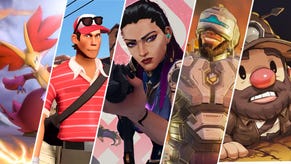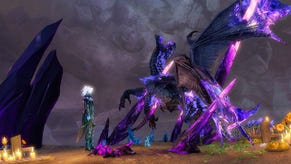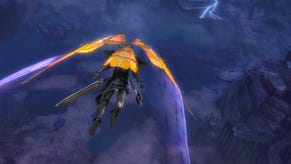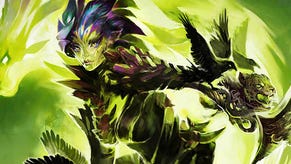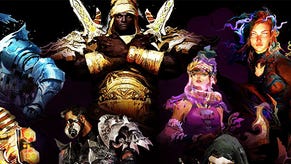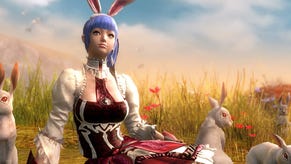Guild Wars 2 Heart of Thorns Interview: On Mastery, Defiance Changes, and More Jumping Puzzles
Mike sits down with three developers behind Guild Wars 2's new Heart of Thorns expansion.
This article first appeared on USgamer, a partner publication of VG247. Some content, such as this article, has been migrated to VG247 for posterity after USgamer's closure - but it has not been edited or further vetted by the VG247 team.
Over two years ago, ArenaNet launched the sequel to Guild Wars , its first successful MMO. The resulting game built upon everything that worked in the first Guild Wars, but aimed to bring the full-on MMORPG experience without a subscription fee. the game features a full PVE experience backed by World v World and PVP play. Since then, ArenaNet has kept the game rolling with free content updates under its Living World, a system that keep the game's overall story moving forward with new stories, events, and areas.
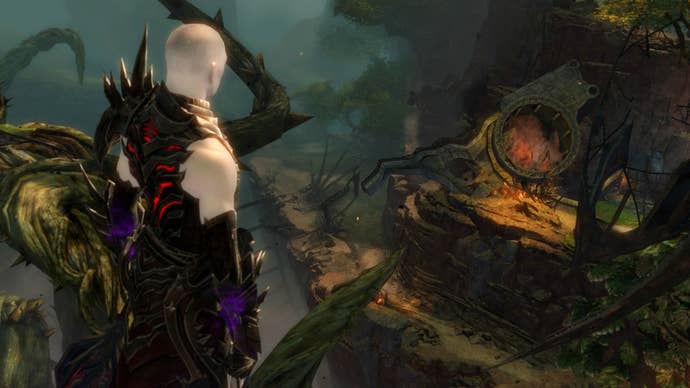
Now it's time for Guild Wars 2, 2.0. Now it's time for the game's first expansion, Heart of Thorns. I've already given you a brief overview of the expansion and delved deep into its additional profession, the Revenant, but Heart of Thorns is changing a great deal about Guild Wars 2. To understand all the changes, I sat down with lead content designer Matt Wuerffel, development director Kristen Bornemann, and system designer Jon Peters.
USgamer: In previous press releases and announcements, ArenaNet has explained that Guild Wars 2: Heart of Thorns is establishing a brand-new core for the game. Were these ideas something that didn't fit into the base game or a reaction to the first game's live launch?
Kristen Bornemann: I think we launched Guild Wars 2 before and we're seeing where we're going from there. We're very proud of the base game, but that doesn't mean we don't see places where we can move forward. We've had 40 content releases between the launch of Guild Wars 2 and this expansion. We've learned a lot from those releases and we've taken those lessons into Heart of Thorns. The expansion allows us the opportunity to do things we couldn't do before.
Matt Wuerffel: From the very beginning with Guild Wars 2, we looked at this game as something where we want your interactions with other players to be a positive experience. From the way we structure loot systems to the way we scale events and content, when you see another player, it's gotta be awesome. We applied that to every area of the game.
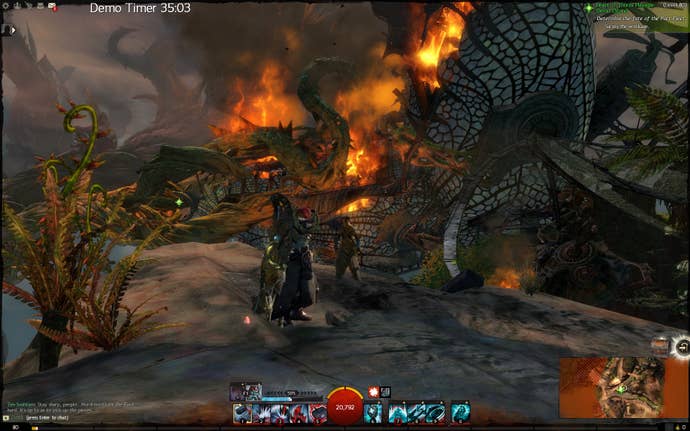
We said, 'How do we give people more choice? How do we give them more ways to interact with the game? How do we still maintain that core philosophy?' With every core system in the game, we looked at where they were and said 'Hey, are these at a place that we're happy with?' Almost always at our studio, the answer is 'no'. Providing choice to players, providing progression to players without invalidating what you've done before. With Hearts of Thorns, every system that we've touched and every piece of content we've touched is driven by that desire to respect players' time.
USgamer: The Mastery system provides alternate advancement for players, allowing them to unlock new ways to move around and interact with the Maguuma Jungle. You could've raise the level cap and called it day, but you decided against it. Why?
Matt: There's definitely a desire to make sure that whatever system we built came from a place that, for players who invested a lot of time in the base game, that was a valid choice. The time they invested was going to be something that helped them in content going forward. Coming out of that idea and looking at conventions, we said 'Hey, we can raise the level cap, but what does that do?' Then we'd have to add a new tier of gear. We looked at it and decided that's not consistent with what Guild Wars 2 is. The time you invest will always be worthwhile.
Kristen: That's the amazing thing, Masteries is doing things the Guild Wars 2 way. That's the thing that's threaded through all of Guild Wars 2: we do things our way and don't worry about how other MMOs have done it. Certainly, when I sat down with the design team; the easy way would've been to just bump up the level cap. From my point of view, that would've been the easy thing to do, but we really wanted to do the hard thing.
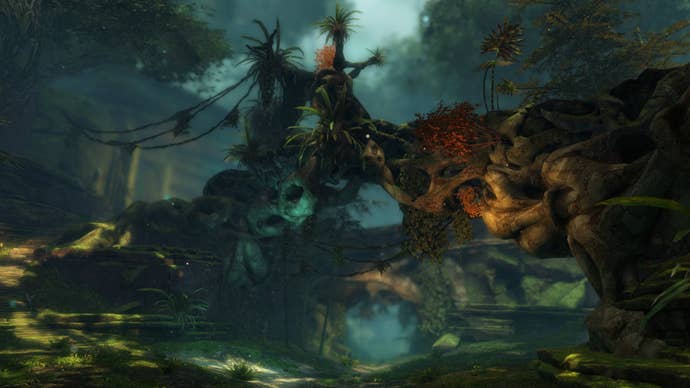
USgamer: Can we expect to see the new Mastery system extend to PVP?
Matt: If you're familiar with WvW ability lines, they're actually very similar to Mastery lines. Mastery lines are a PVE answer for progression. WvW already has a long-term system. We're not talking yet about what we're doing for PVP progression overall, but it definitely is part of the expansion that we're looking at.
USgamer: One huge change is in Heart of Thorns' Defiance system. Previously, you had to use abilities to remove stacks of Defiance and make certain creatures vulnerable to attack. Now there's a Defiance bar attached to certain foes. Could you explain your thoughts behind the change?
Jon Peters: Guild Wars 2 is a game where people work together. The old Defiance system required a lot of attention. It was like, 'Don't use your interrupt skill right now.' There was no connection between how we're playing together. We like there to be clarity and teamwork. The new Defiance system is this bar where you have to do things together. If [an enemy's] bar comes up, we interrupt together. Some creatures always have the bar and you have to spike it down. It's not like one person can slowly whittle it down. In the way you share loot, rezzing, and events, everyone that's fighting this creature shares it.
There might be base creatures that aren't even bosses that have a really small Defiance bar. For them, you need a couple of folks with a CC skill. Then there will be bosses who will be bigger. We can set different ones up at different sizes and it'll scale based on our scaling content.
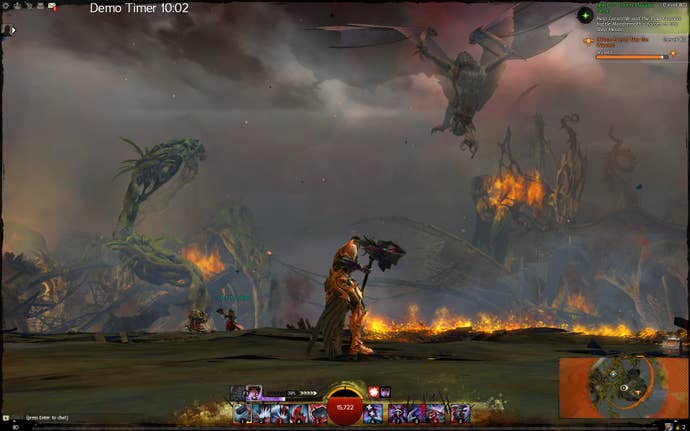
USgamer: The original release mentioned new profession specializations, which allow players to take their favorite professions in new directions. What's the key idea behind them?
Jon: We chose the word specializations for a reason. Their intent is to specialize and focus you. We have the Druid Ranger, with the staff. There's the Greatsword Necro, which we haven't said the name of yet. You can speculate what kind of Necromancer that's going to be. We want to allow them to push you in a direction. The actual specialization system, which we'll talk about when we're ready, has a lot more to it. It sets the core for how the class is built. It's a big system change that's going to be exciting for people. Because of that, some changes are going to have to happen to the base classes. Skills will get tweaks.
USgamer: Guild Wars 2 is remarkably freeform when it comes to getting a group to together. While other MMOs are rather rigid, Guild Wars 2 lets you put groups together without worrying about the Holy Trinity of MMO role: Tank, Healer, and Damage. Will specializations change that?
Jon: I think there's some amount of that, trying to define a role a little more. I don't think we ever wanted it to be - I don't want to say we didn't want it to be free-form - but we didn't want it to be that there weren't roles. We wanted it to be more fluid.
Specializations, and to a greater extent the creatures that we're building for Heart of Thorns, are going to create more roles. Not in the sense of 'Bring your Guardian for support', but if you have support skills on your Guardian, you're going to need to use them. We'll have creatures that will force you. AOE Stability skills are really important in the Wyvern fight, for example.
While specialization will help enforce it on the players' side, I think the driving force will be designing creatures that will push that. Some of our old creatures could've been plugged into any game, while some of the creatures we're building now you would never see in another game. They're Guild Wars 2 creatures.
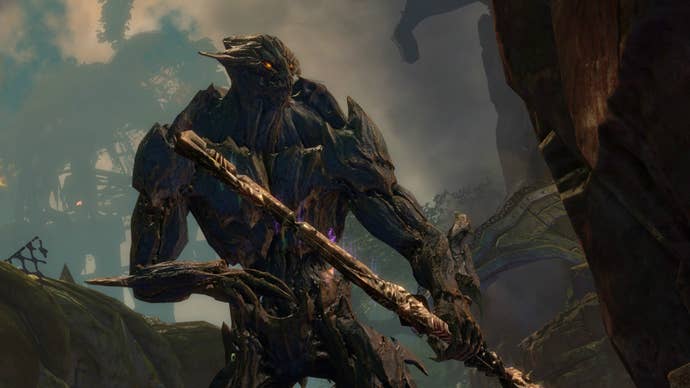
We want players to be thinking about that stuff. Players that are thinking about that stuff will be much more efficient this time around. Berzerker/Hundred Blades Warriors were the best thing because ultimately if you did damage, you killed the thing, and you were happy. If creatures are reflecting a bunch of the damage back at you, you have to stop and think. We want you to stop, look at the creature, and figure out what you need to change. We want player to feel like 'Yeah, I figured this out, I'm awesome!' That's what games are about.
USgamer: Another big change in Heart of Thorns' new zone, the Maguuma Jungle, is the focus on vertical level design. There have been vertical levels in Guild Wars 2 before, but nothing on this scale. How is that changing the game's content and encounter design?
Matt: It definitely adds more design challenges, but if also offers more opportunity for cool solutions, which is great. The Silverwastes and some of the Living World content has been about exploring what we do with vertical space and movement skills. It became clear that there were a lot of players excited about that. With Heart of Thorns we said, 'Let's just crank that to 11' and made these maps incredibly vertical. We're starting from there and then we'll figure out all of the problems that it causes. Very early on, it was clear that moving around was awesome, but it's frustrating when you die. That was the birth of gliding.
Jon: It has some design impact. We know it's okay now for a creature to knock you off of a cliff because you have hang-gliding. It's you're on a canopy and that guy's going to knock you off; it lets us introduce those challenges and let people deal with them in the way they want to.
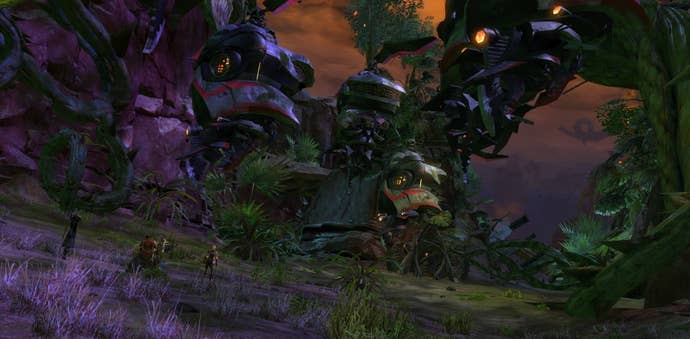
USgamer: One thing that really excited some players in Guild Wars 2 was jumping puzzles. Some were incredibly hard. Can we expect to see more jumping puzzles in Heart of Thorns and will they be harder with the new movement options like hang-gliding?
Matt: Certainly some of them will be harder. One of the things we're doing in Heart of Thorns is a new concept called Adventures, where we take a lot of things that we had in the base game and highlight them. Jumping puzzles and mini dungeons, they were on the map and if you knew where they were, you could go and get a daily chest at the end, but it really wasn't exposed to anyone. Adventures is a version of tying those things into the story of the maps.
As you complete events and progress your Outpost, you'll unlock Adventures and they might be things like jumping puzzles or small challenges. We set up performance thresholds, where you complete them in a certain time to earn rewards. If you complete it even faster than that, then maybe you can get additional Mastery points at the end. Then we tie Masteries into those thresholds; in order to get the best time, you might need to to invest in gliding and the jumping mushroom line.
USgamer: Were you surprised at how popular the jumping puzzles turned out to be?
Matt: I don't know that I was surprised. When we started building them, the people building them were like, 'This is all I want to build from now until the end of time.' We have a lot of passion going into those things. So watching players engage with them, it's really gratifying to see people that are excited about that. When we get people that aren't excited, you look at that and ask, 'What is about this? Barrier to entry? Lack of partial progress? Or are we fine with this not being for everyone?'
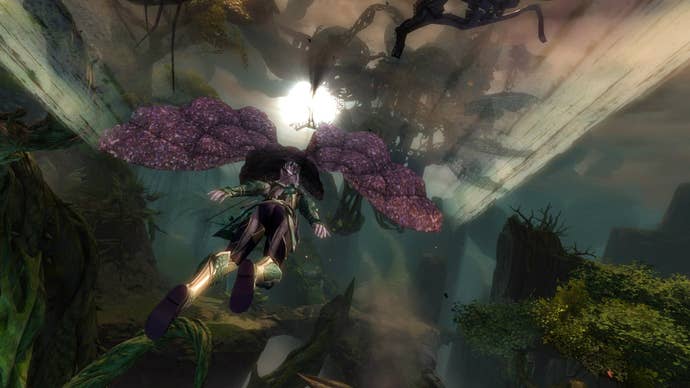
USgamer: Do you worry with Adventures playing up some of this hidden content, that veteran Guild Wars 2 fans will be turned off by things becoming more accessible?
Matt: There's still going to be a lot of hidden nooks and crannies for explorers. It's not that we're putting everything in your face. There were a lot of those systems that you just didn't know about.
Kristen: The other example is the Precursor Scavenger Hunt. Making that more accessible and less nuanced is important. Making sure people understand where they're going when they're trying to achieve something like that. You'll see, when this feature comes out, the recognition of those who have done things the hard way in the past.
USgamer: Heart of Thorns has mentioned a number of features, but i'm not seeing anything about Dungeons. Can we expect more Fractals in the expansion?
Matt: We've talked about all the major features of Heart of Thorns. We have talked [internally] about what we're doing for Fractals and other content systems that are part of the base game. We don't have any specifics on dungeon right now, but we know a lot of people play dungeons. It is something that comes up. If you look at the Mastery line the demo, there is one for Fractals. We can't really comment a lot, except to say we looking at all of those things.
Kristen: Challenging group content is definitely something that we want to do. How that manifests, we'll talk about that more soon.
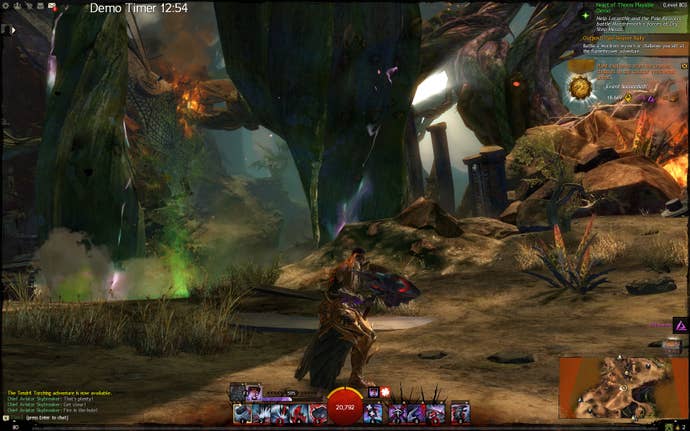
USgamer: Do you find that Guild Wars 2 players are heavily-segmented? Do players stick to PVE, PVP, or World v World?
Matt: What we see in metrics is almost all of our players actually engage with World v World, and PVP and PVE. There's a tremendous amount of play across all those types. Within the types, there's a lot of cross-pollination.
Kristen: We're not talking a lot about Guild Halls, but one thing is that Guild Halls are a pillar that's definitely weaving throughout PVP, WvW, and PVE. It's culminating all of that stuff and making guilds meaningful in all three areas.
USgamer: Can we expect the same pace for Living World content updates?
Kristen: We definitely not talking about anything after the expansion right now. I will say it's a baton that is being handed to the expansion. We will be supporting the game after launch. How that looks we'll be talking about later.


